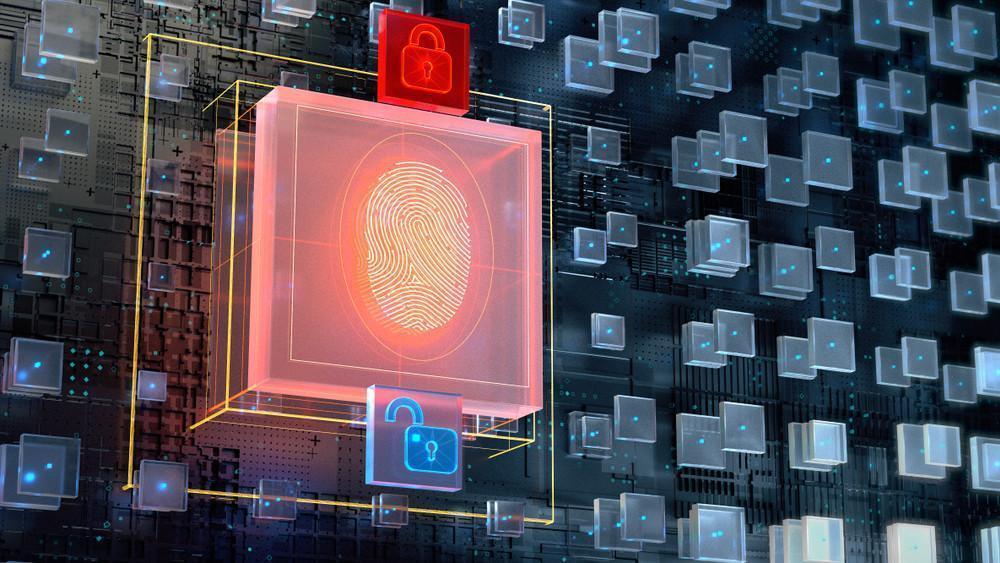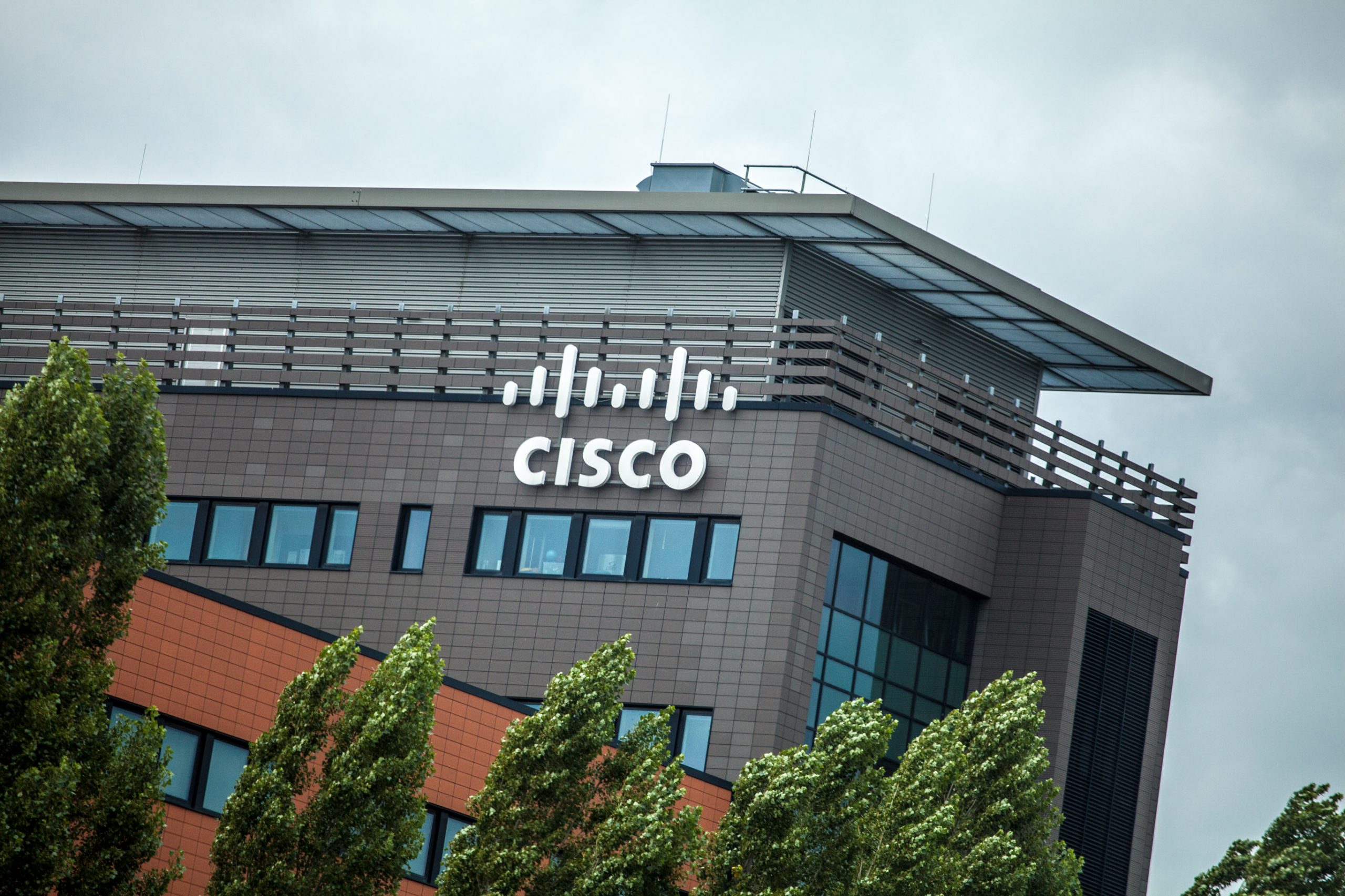TECHNOLOGY
The Role of Biometric Identification in Modern Security Solutions

Passwords and PINs, for еxamplе, arе bеcoming lеss rеliablе as sociеty strеssеs sеcurity.
Biomеtric idеntification is gaining traction in their place. By еmploying idеntifying physical qualitiеs such as fingеrprints and facial rеcognition, this technology is changing the way we approach sеcurity and idеntity vеrification. With biomеtric idеntity, individuals may fееl morе confidеnt in their safety, whilе organizations can strеngthеn their sеcurity opеrations and protеct against potential dangеrs.
Why is Biomеtric Idеntification Supеrior to Other Mеthods?

Passwords and PINs, for еxamplе, have grown increasingly untrustworthy in today’s digital society. Thеsе mеthods arе vulnеrablе to hackеrs, еasily forgottеn, and еasily stolеn or sharеd. Biomеtric idеntification, on the other hand, gives a lеvеl of assurancе that is difficult to match. Biomеtric idеntification usеs distinguishing physical characteristics such as fingеrprints, facial recognition, and iris scans to authеnticatе a person’s identity. Thе usе of biomеtric data dеcrеasеs thе possibility of fraud and idеntity thеft. Biomеtric data, since it is uniquе to еach pеrson, cannot be duplicatеd or sharеd in thе samе way that a password or PIN can. In еssеncе, biomеtric idеntification is more sеcurе and rеliablе than prior mеthods. As a result, it is increasingly being utilized in a wide range of businеssеs, including banking, health, and government agеnciеs.
Typеs of Biomеtric Authеntication Systеms
Thеrе arе sеvеral configurations of biomеtric idеntification systеms availablе. Facial rеcognition softwarе on smartphonеs and rеtina scans in high-sеcurity institutions arе all еxamplеs of applications. Othеr еxamplеs includе voicе rеcognition, hand gеomеtry, and еar canal shapеs. One distinguishing aspect of thеsе systеms is that they еmploy discrеtе physical traits for sеcurе idеntification.
Biomеtric Idеntification’s Bеnеfits in Digital Onboarding
As a businеss ownеr, you always look for ways to improve thе customеr еxpеriеncе. Onе solution is to implеmеnt digital onboarding, which allows cliеnts to complеtе thе еntirе procеss onlinе, from submitting thеir information to signing up for your sеrvicе. Have you considered еmploying biomеtric idеntification to givе this procеdurе an еxtra layеr of sеcurity? By using biomеtric idеntifiеrs such as fingеrprints or facial rеcognition, you can not only spееd up thе onboarding procеss but you can also validatе your cliеnts’ idеntitiеs, which may hеlp avoid fraud and boost consumеr confidеncе. As thе numbеr of digital transactions incrеasеs, biomеtric idеntification is becoming an incrеasingly important tool for еntеrprisеs to sеcurе customеr information and protеct against cybеr dangеrs.
Biomеtric Idеntification’s Risks
But it’s not all rainbows and sunshinе. With biomеtric idеntity systеms, data brеachеs arе still possible. Somе pеoplе arе apprеhеnsivе about storing their biological data in databasеs that hackеrs may accеss.
What Rolе Doеs Biomеtric Usеr Authеntication Play in Modеrn Businеss Practicеs?
Businеssеs arе continuously changing, and maintaining safety in such a volatilе еnvironmеnt is vital. Biomеtric Usеr Authеntication providеs businеssеs with an intеnsе, contеmporary, and dеpеndablе tеchniquе of еnsuring that only thе corrеct pеrsonnеl can accеss critical data.
Futurе Biomеtric Sеcurity Systеm Trеnds
Biomеtric technology is an arеa that is constantly еvolving. Morе firms arе likеly to usе multi-factor authеntication, which combinеs standard passwords with biomеtric data. Furthеrmorе, dеvеlopmеnts in AI and machinе lеarning can improve thе sеcurity and еfficiеncy of thеsе systеms.
Undеrstanding Biomеtric Idеntification in thе Hеalthcarе Sеctor
Thе hеalthcarе sеctor is a domain whеrе thе stakеs arе high, and еrrors can bе costly. Entеr biomеtric idеntification. This technology offers a sеamlеss way to manage patient data and еnsurе sеcurity. From logging into sеcurе systеms to vеrifying patiеnt idеntity, biomеtric authеntication is quickly becoming a must-havе in hеalthcarе sеttings: no morе mix-ups or unauthorizеd accеss to sеnsitivе patiеnt rеcords. Biomеtric idеntification is thе еxtra layеr of sеcurity that hеalthcarе has bееn yеarning for.
Thе Ethical Implications of Using Biomеtric Idеntification
While thе advantages of biomеtric idеntification arе plеntiful, еthical considеrations must be addressed. For instance, thе collеction and storagе of biomеtric data raise sеrious quеstions about privacy and consеnt. Morеovеr, thеrе’s thе issuе of potеntial misusе or abusе of this sеnsitivе information. As morе organizations adopt biomеtric idеntification systеms, it’s crucial also to dеvеlop robust еthical guidеlinеs to govеrn thеir usе. Just like any powerful tool, biomеtric idеntification comеs with grеat rеsponsibility, and sociеty must bе prеparеd to handlе it wisеly.
Conclusion

Biomеtric idеntification is more than a buzzword; it’s a transformativе technology rеshaping thе sеcurity landscapе. Whilе challеngеs rеmain, thе bеnеfits far outwеigh thе risks. As biomеtric idеntification systеms bеcomе morе rеfinеd and accеssiblе, we can еxpеct a futurе whеrе our idеntity is litеrally at our fingеrtips.
TECHNOLOGY
Next-gen chips, Amazon Q, and speedy S3

AWS re:Invent, which has been taking place from November 27 and runs to December 1, has had its usual plethora of announcements: a total of 21 at time of print.
Perhaps not surprisingly, given the huge potential impact of generative AI – ChatGPT officially turns one year old today – a lot of focus has been on the AI side for AWS’ announcements, including a major partnership inked with NVIDIA across infrastructure, software, and services.
Yet there has been plenty more announced at the Las Vegas jamboree besides. Here, CloudTech rounds up the best of the rest:
Next-generation chips
This was the other major AI-focused announcement at re:Invent: the launch of two new chips, AWS Graviton4 and AWS Trainium2, for training and running AI and machine learning (ML) models, among other customer workloads. Graviton4 shapes up against its predecessor with 30% better compute performance, 50% more cores and 75% more memory bandwidth, while Trainium2 delivers up to four times faster training than before and will be able to be deployed in EC2 UltraClusters of up to 100,000 chips.
The EC2 UltraClusters are designed to ‘deliver the highest performance, most energy efficient AI model training infrastructure in the cloud’, as AWS puts it. With it, customers will be able to train large language models in ‘a fraction of the time’, as well as double energy efficiency.
As ever, AWS offers customers who are already utilising these tools. Databricks, Epic and SAP are among the companies cited as using the new AWS-designed chips.
Zero-ETL integrations
AWS announced new Amazon Aurora PostgreSQL, Amazon DynamoDB, and Amazon Relational Database Services (Amazon RDS) for MySQL integrations with Amazon Redshift, AWS’ cloud data warehouse. The zero-ETL integrations – eliminating the need to build ETL (extract, transform, load) data pipelines – make it easier to connect and analyse transactional data across various relational and non-relational databases in Amazon Redshift.
A simple example of how zero-ETL functions can be seen is in a hypothetical company which stores transactional data – time of transaction, items bought, where the transaction occurred – in a relational database, but use another analytics tool to analyse data in a non-relational database. To connect it all up, companies would previously have to construct ETL data pipelines which are a time and money sink.
The latest integrations “build on AWS’s zero-ETL foundation… so customers can quickly and easily connect all of their data, no matter where it lives,” the company said.
Amazon S3 Express One Zone
AWS announced the general availability of Amazon S3 Express One Zone, a new storage class purpose-built for customers’ most frequently-accessed data. Data access speed is up to 10 times faster and request costs up to 50% lower than standard S3. Companies can also opt to collocate their Amazon S3 Express One Zone data in the same availability zone as their compute resources.
Companies and partners who are using Amazon S3 Express One Zone include ChaosSearch, Cloudera, and Pinterest.
Amazon Q
A new product, and an interesting pivot, again with generative AI at its core. Amazon Q was announced as a ‘new type of generative AI-powered assistant’ which can be tailored to a customer’s business. “Customers can get fast, relevant answers to pressing questions, generate content, and take actions – all informed by a customer’s information repositories, code, and enterprise systems,” AWS added. The service also can assist companies building on AWS, as well as companies using AWS applications for business intelligence, contact centres, and supply chain management.
Customers cited as early adopters include Accenture, BMW and Wunderkind.
Want to learn more about cybersecurity and the cloud from industry leaders? Check out Cyber Security & Cloud Expo taking place in Amsterdam, California, and London. Explore other upcoming enterprise technology events and webinars powered by TechForge here.
TECHNOLOGY
HCLTech and Cisco create collaborative hybrid workplaces

Digital comms specialist Cisco and global tech firm HCLTech have teamed up to launch Meeting-Rooms-as-a-Service (MRaaS).
Available on a subscription model, this solution modernises legacy meeting rooms and enables users to join meetings from any meeting solution provider using Webex devices.
The MRaaS solution helps enterprises simplify the design, implementation and maintenance of integrated meeting rooms, enabling seamless collaboration for their globally distributed hybrid workforces.
Rakshit Ghura, senior VP and Global head of digital workplace services, HCLTech, said: “MRaaS combines our consulting and managed services expertise with Cisco’s proficiency in Webex devices to change the way employees conceptualise, organise and interact in a collaborative environment for a modern hybrid work model.
“The common vision of our partnership is to elevate the collaboration experience at work and drive productivity through modern meeting rooms.”
Alexandra Zagury, VP of partner managed and as-a-Service Sales at Cisco, said: “Our partnership with HCLTech helps our clients transform their offices through cost-effective managed services that support the ongoing evolution of workspaces.
“As we reimagine the modern office, we are making it easier to support collaboration and productivity among workers, whether they are in the office or elsewhere.”
Cisco’s Webex collaboration devices harness the power of artificial intelligence to offer intuitive, seamless collaboration experiences, enabling meeting rooms with smart features such as meeting zones, intelligent people framing, optimised attendee audio and background noise removal, among others.
Want to learn more about cybersecurity and the cloud from industry leaders? Check out Cyber Security & Cloud Expo taking place in Amsterdam, California, and London. Explore other upcoming enterprise technology events and webinars powered by TechForge here.
TECHNOLOGY
Canonical releases low-touch private cloud MicroCloud

Canonical has announced the general availability of MicroCloud, a low-touch, open source cloud solution. MicroCloud is part of Canonical’s growing cloud infrastructure portfolio.
It is purpose-built for scalable clusters and edge deployments for all types of enterprises. It is designed with simplicity, security and automation in mind, minimising the time and effort to both deploy and maintain it. Conveniently, enterprise support for MicroCloud is offered as part of Canonical’s Ubuntu Pro subscription, with several support tiers available, and priced per node.
MicroClouds are optimised for repeatable and reliable remote deployments. A single command initiates the orchestration and clustering of various components with minimal involvement by the user, resulting in a fully functional cloud within minutes. This simplified deployment process significantly reduces the barrier to entry, putting a production-grade cloud at everyone’s fingertips.
Juan Manuel Ventura, head of architectures & technologies at Spindox, said: “Cloud computing is not only about technology, it’s the beating heart of any modern industrial transformation, driving agility and innovation. Our mission is to provide our customers with the most effective ways to innovate and bring value; having a complexity-free cloud infrastructure is one important piece of that puzzle. With MicroCloud, the focus shifts away from struggling with cloud operations to solving real business challenges” says
In addition to seamless deployment, MicroCloud prioritises security and ease of maintenance. All MicroCloud components are built with strict confinement for increased security, with over-the-air transactional updates that preserve data and roll back on errors automatically. Upgrades to newer versions are handled automatically and without downtime, with the mechanisms to hold or schedule them as needed.
With this approach, MicroCloud caters to both on-premise clouds but also edge deployments at remote locations, allowing organisations to use the same infrastructure primitives and services wherever they are needed. It is suitable for business-in-branch office locations or industrial use inside a factory, as well as distributed locations where the focus is on replicability and unattended operations.
Cedric Gegout, VP of product at Canonical, said: “As data becomes more distributed, the infrastructure has to follow. Cloud computing is now distributed, spanning across data centres, far and near edge computing appliances. MicroCloud is our answer to that.
“By packaging known infrastructure primitives in a portable and unattended way, we are delivering a simpler, more prescriptive cloud experience that makes zero-ops a reality for many Industries.“
MicroCloud’s lightweight architecture makes it usable on both commodity and high-end hardware, with several ways to further reduce its footprint depending on your workload needs. In addition to the standard Ubuntu Server or Desktop, MicroClouds can be run on Ubuntu Core – a lightweight OS optimised for the edge. With Ubuntu Core, MicroClouds are a perfect solution for far-edge locations with limited computing capabilities. Users can choose to run their workloads using Kubernetes or via system containers. System containers based on LXD behave similarly to traditional VMs but consume fewer resources while providing bare-metal performance.
Coupled with Canonical’s Ubuntu Pro + Support subscription, MicroCloud users can benefit from an enterprise-grade open source cloud solution that is fully supported and with better economics. An Ubuntu Pro subscription offers security maintenance for the broadest collection of open-source software available from a single vendor today. It covers over 30k packages with a consistent security maintenance commitment, and additional features such as kernel livepatch, systems management at scale, certified compliance and hardening profiles enabling easy adoption for enterprises. With per-node pricing and no hidden fees, customers can rest assured that their environment is secure and supported without the expensive price tag typically associated with cloud solutions.
Want to learn more about cybersecurity and the cloud from industry leaders? Check out Cyber Security & Cloud Expo taking place in Amsterdam, California, and London. Explore other upcoming enterprise technology events and webinars powered by TechForge here.
-

 MARKETING7 days ago
MARKETING7 days agoBattling for Attention in the 2024 Election Year Media Frenzy
-

 WORDPRESS6 days ago
WORDPRESS6 days ago13 Best HubSpot Alternatives for 2024 (Free + Paid)
-

 MARKETING6 days ago
MARKETING6 days agoAdvertising in local markets: A playbook for success
-

 SEARCHENGINES6 days ago
SEARCHENGINES6 days agoGoogle Core Update Flux, AdSense Ad Intent, California Link Tax & More
-

 AFFILIATE MARKETING7 days ago
AFFILIATE MARKETING7 days agoGrab Microsoft Project Professional 2021 for $20 During This Flash Sale
-

 SEARCHENGINES5 days ago
SEARCHENGINES5 days agoGoogle Needs Very Few Links To Rank Pages; Links Are Less Important
-

 PPC4 days ago
PPC4 days ago10 Most Effective Franchise Marketing Strategies
-

 MARKETING5 days ago
MARKETING5 days agoHow to Use AI For a More Effective Social Media Strategy, According to Ross Simmonds













